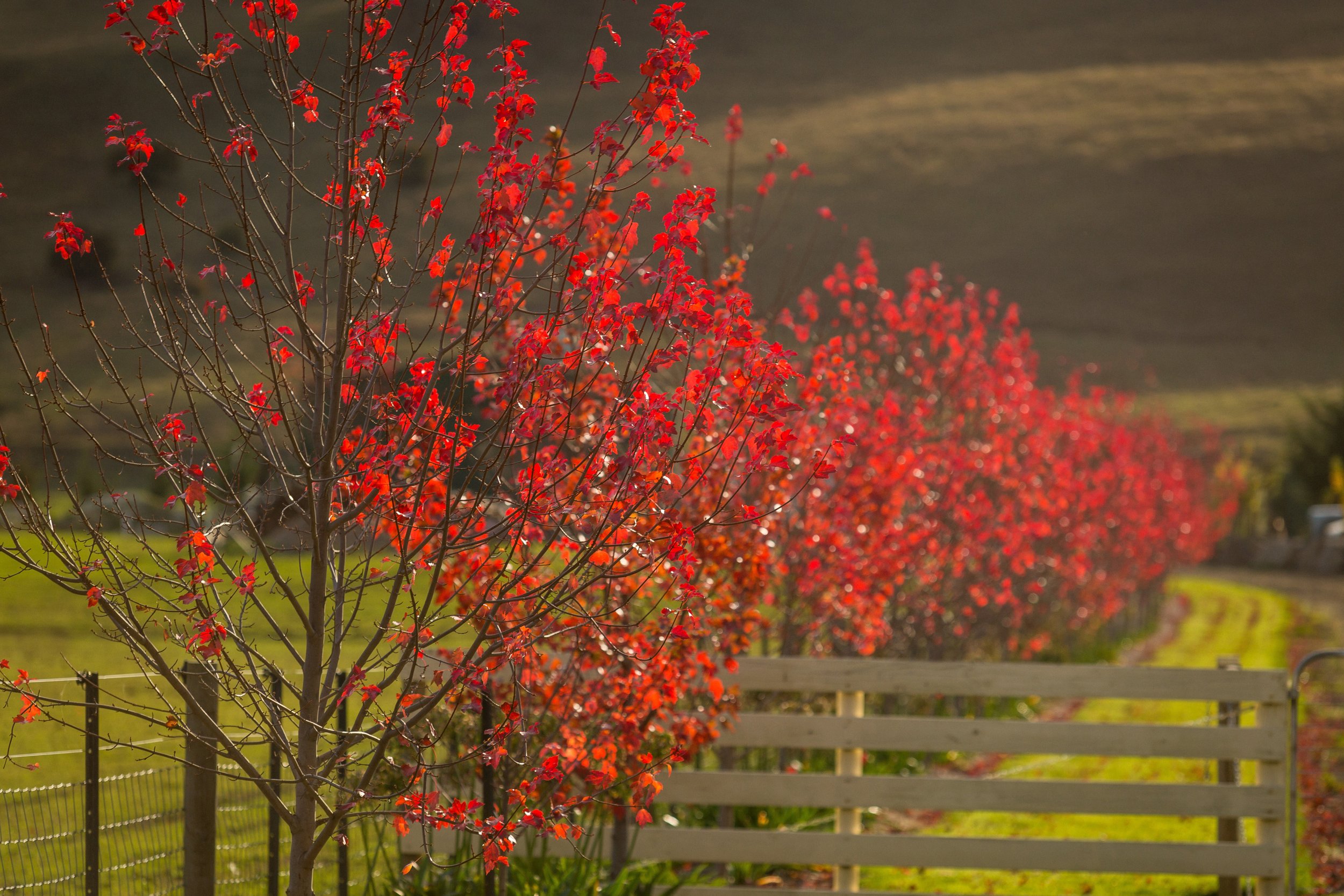How to have a truly Tasmanian autumn
Huon Valley in autumn. Image credit: Tourism Tasmania & Nick Osborne
When we think of autumn in Hobart, we think of crunchy leaves, crisp, local apples and gardens bursting with colour. Read on to see how you can have a truly Tasmanian autumn.
See the turning of the fagus
There is nothing more Tasmanian than seeing the turning of the fagus. Are you confused yet? Nothofagus gunnii, lovingly known as ‘the fagus’ by locals, is a native beech tree. It is the only cold-climate deciduous tree in Australia and is endemic to Tasmania. The fagus is also an ancient tree and was around when dinosaurs roamed! Seeing this unique tree from the dawn of time change colour is incredible. Its tiny, ridgy leaves take 2–3 weeks to turn from green to yellow, orange and then red, before becoming brown and falling off, so timing is everything.
Fagus (Nothofagus gunnii). Image credit: Kelly Slater
The best place to see the turning of the fagus is at Mount Field National Park, just a 90-minute drive from Hobart. And the best time to view the turning of the fagus is generally in late April. Its colour change is subject to weather conditions, so make sure to check with a Tasmanian in the know before you go.
Ducks at Richmond Bridge. Image credit: Alastair Bett
Enjoy a riverside picnic in Richmond
Set in the middle of wine country with a meandering river and trees gently bending over the banks, Richmond is the definition of charming. And it’s only a 30-minute drive from Hobart. This tiny town has more than 50 historic buildings constructed about 200 years ago. Although Richmond isn’t big, it fits in more than its fair share of galleries, museums, cafes and historical landmarks.
Bridge Street, Richmond. Image credit: Alastair Bett
The most well-known landmark in Richmond is the Richmond Bridge, made famous by being the oldest bridge in Australia still in use. The grassy riverbank is beautiful in autumn and the perfect spot for a bite to eat. Just make sure to keep a close eye on the ducks, who love picnics just as much as we do.
Huon Valley. Image credit: Tourism Tasmania & Nick Osborne
Explore the Huon Valley
The peaceful beauty of the Huon Valley is even more picturesque in autumn. With golden and orange deciduous trees lining streets, it’s well worth the short drive. Admire the autumn colours reflected in the Huon River, or visit the region’s wineries amongst the golden vines in autumn. Or if cider is more your thing, there are plenty of local cider makers like Willie Smiths, Franks, Simple Cider and Pagan Cider to try.
Taste of the Huon. Image credit: Chris Phelps
Talk a walk around the beautiful towns of the valley. Or if you’re feeling more adventurous, there are some great walking tracks to try, like Mystery Creek Cave or Duckhole Lake. Autumn also means apple season in the Huon Valley, where roadside stalls are heaving with fresh, new-season apples.
Roadside stall, Geeveston. Image credit: Paul County
Play in the autumn leaves
Jumping in autumn leaves is one of life’s simple pleasures, and it’s not just for children. The Royal Tasmanian Botanical Gardens has deciduous trees dotted throughout the gardens, and it has the best leaves for jumping in. A trip isn’t complete without spending time in the Japanese gardens, which show off with stunning, fire-red Japanese maple leaves in autumn.
Royal Tasmanian Botanical Gardens. Image credit: Tourism Tasmania & Paul Sinclair
For more truly Tasmanian autumn experiences, make sure to talk to our knowledgeable reception staff, who can tell you about their favourite autumn activities. We love autumn in Hobart, and hope you can enjoy it with us.








